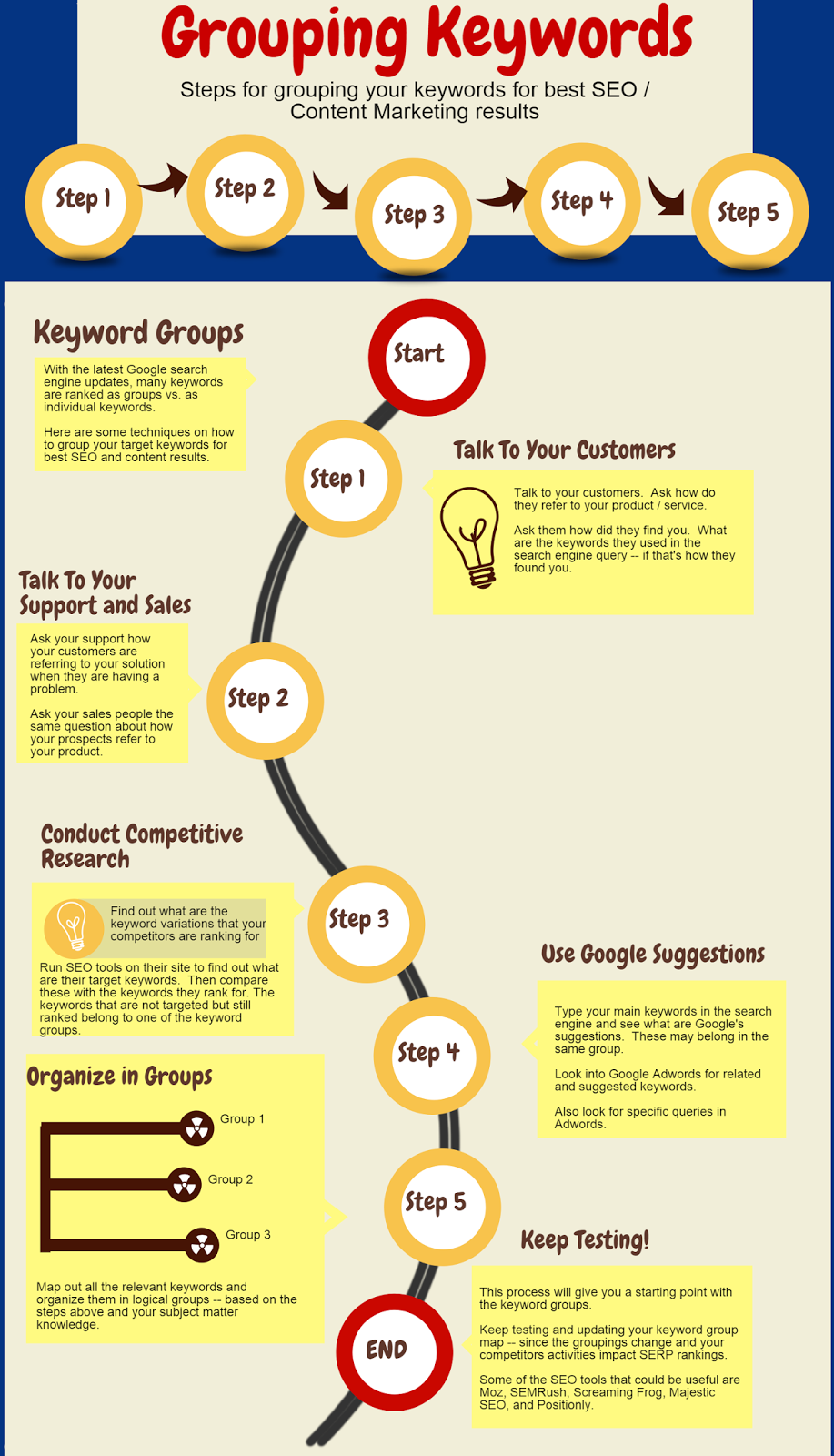One of the key trends discussed at
SMX West 2015 is something we have been increasingly noticing from search engines -- focus on concepts vs. keywords.
This paradigm change has been causing shifts in SERP rankings for the last several months and we have been adjusting our SEO and content marketing strategy to align with it.
Concepts vs. keywords change is pretty fundamental and will most likely be continuously impacting your search engine rankings. This article examines more details behind this change, discusses how it can affect your rankings, and provides five strategies for taking advantage of this trend.
Keywords vs. concepts/themes. For years we have been focused on specific keywords. We have been identifying target keywords, monitoring their performances, and creating campaigns to improve our rankings.
Hard to Manage. You can easily see how this SEO approach can get overwhelming and unmanageable. Each product can have hundreds of keywords to target. If you have multiple products, you may need to be tracking and promoting thousands of keywords.
How do you accomplish that? Do you create thousands of content pieces a month to rank better? That sounds like a daunting task. However, many companies have been doing exactly that -- either manually or by using tools to automate the process of creating individual content pages for each keyword.
Poor content quality. It's obvious that it's impossible to create unique and engaging content for thousands of related words every week without astronomic budgets and resources. As a result, the content produced through this strategy has been highly repetitive and lacked value.
Search quality issues. These tactics allowed companies manipulate search engines for a while, resulting in low quality search results. However, Google has been catching up with such tactics and penalizing low quality and duplicate content with
Penguin and
Panda updates.
And now a more fundamental change is happening.
Semantic search. With the semantic search becoming more prevalent, Google is increasingly ranking groups of related keywords vs. individual ones. The grouping criteria is based on the word order, paid/organic search history, contextual meaning, word relationships, content relevance, domain authority, and other factors.
Good news! This means that your SEO work for specific keywords may result in uplifting your rankings for related keywords as well, even the ones you have not been specifically targeting.
Less on-page SEO. It also means less emphasis on the on-page SEO -- less counting how many times specific keywords should show up on your web pages. The practice of creating a page for each specific (related) keyword becomes mostly irrelevant.
Unexpected results. On a flip side, you may discover wild swings in your target keywords rankings because these specific searches are not as compartmentalized as before.
They are viewed in a wider content of keyword groups.
As a result, your efforts on individual keywords may not be as effective as before. This could be especially the case if you have a better established competitor that dominates related keywords in SERPs.
Here are
five recommendations on embracing this change and making the best out of it:
- Do research and understand top keywords you want to focus on
- Do monitor your individual keywords so you know how they perform and which competitors to focus on
- Do try to understand how individual keywords are grouped in concepts / themes
- Do create good quality and unique content around the themes/groupings you want focus on
- Do use social channels to promote your content and generate high quality links
Also check out my blog on
5 steps to organize your keywords in groups for best SEO & content marketing results.
 After receiving several email requests to share the best practices on how to group keywords, I decided to write a blog on that subject. It also gave me a chance to play around with a new infographics maker tool called Piktochart.
After receiving several email requests to share the best practices on how to group keywords, I decided to write a blog on that subject. It also gave me a chance to play around with a new infographics maker tool called Piktochart. 









